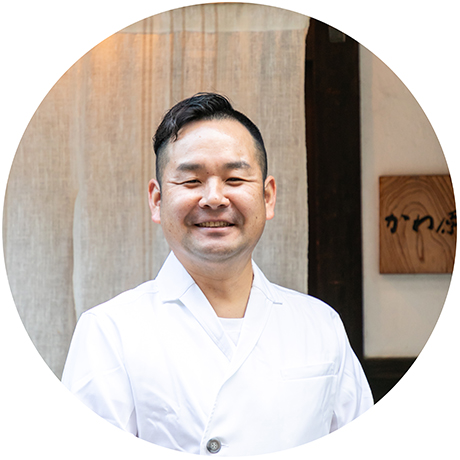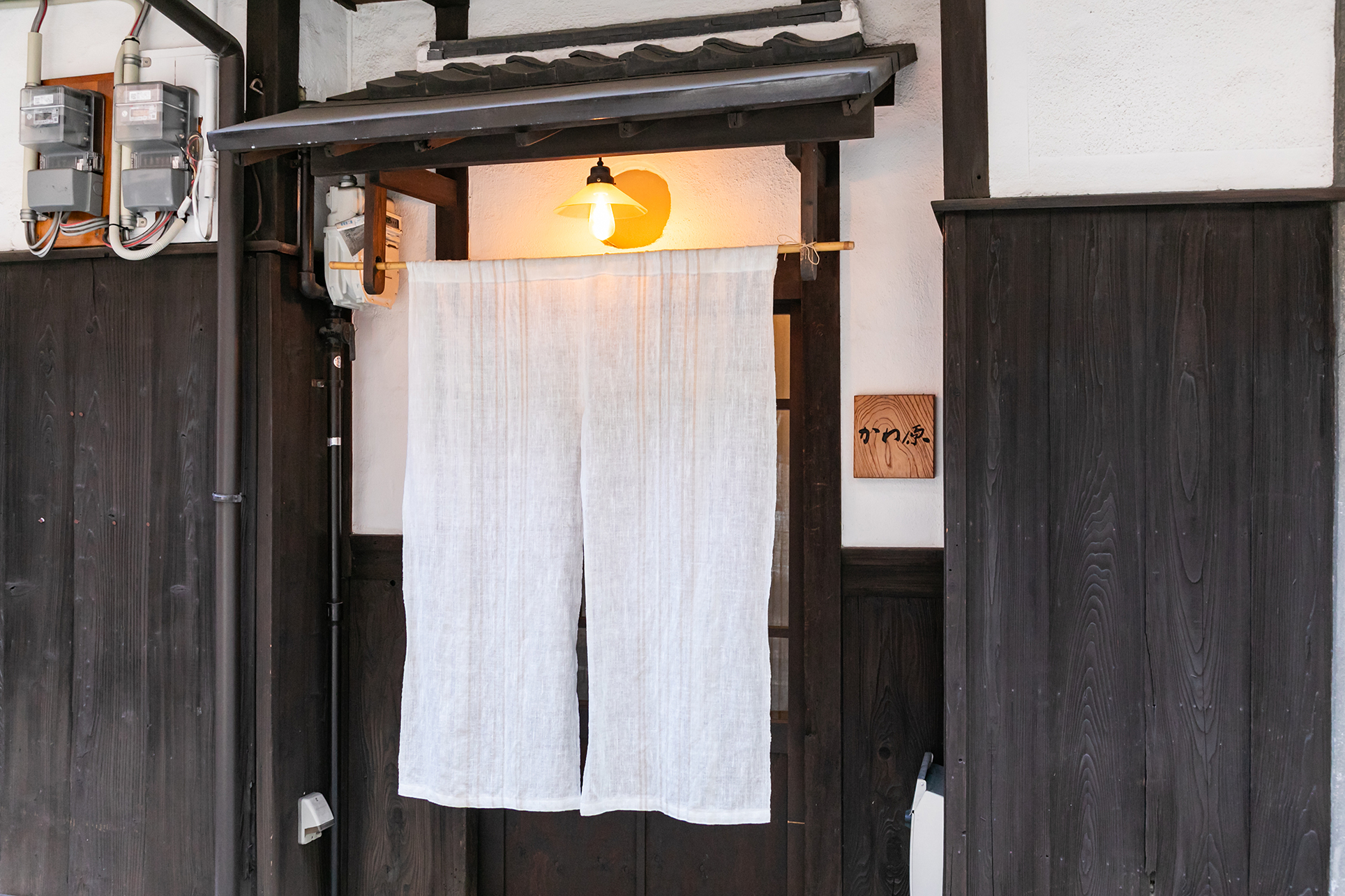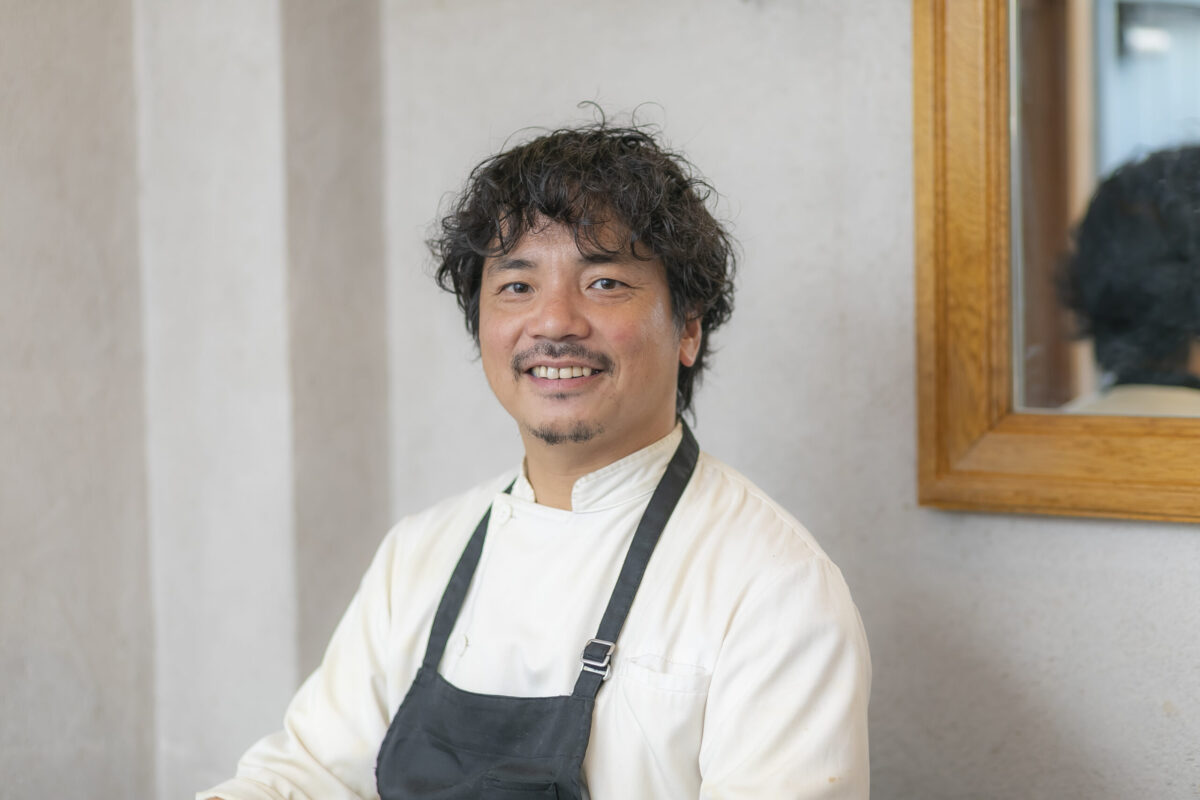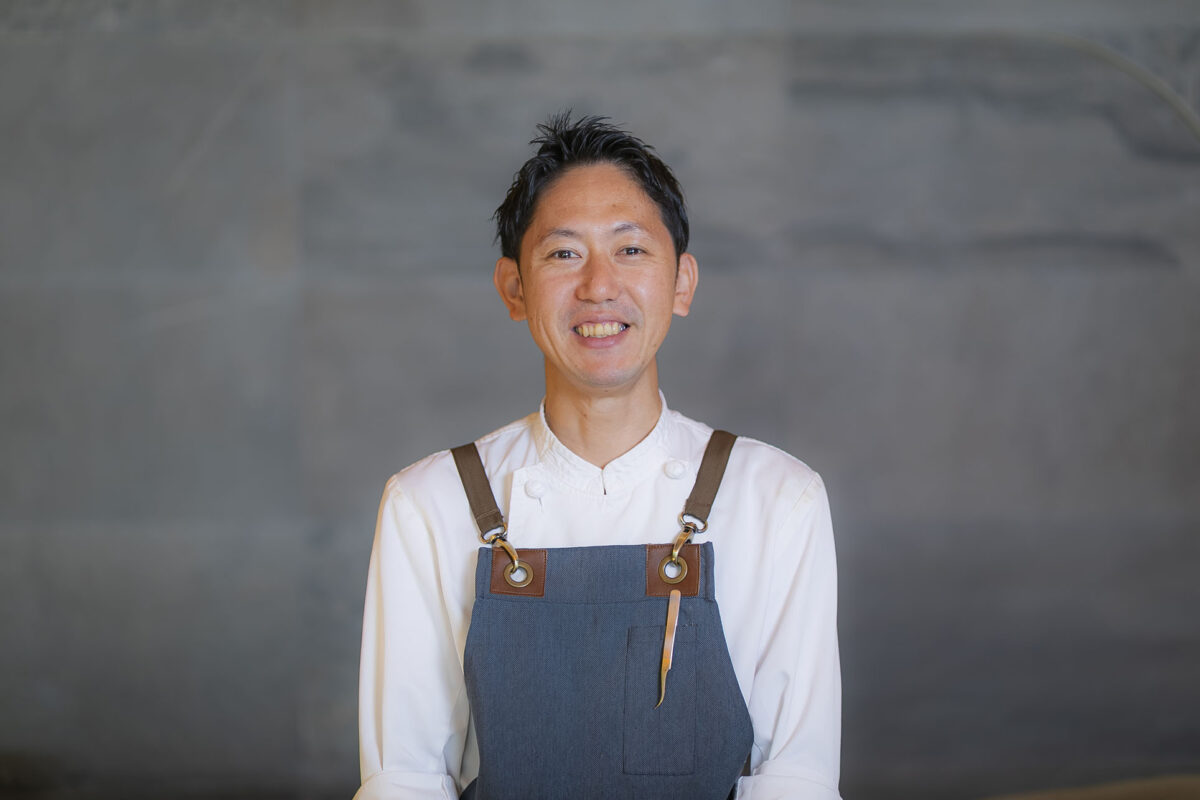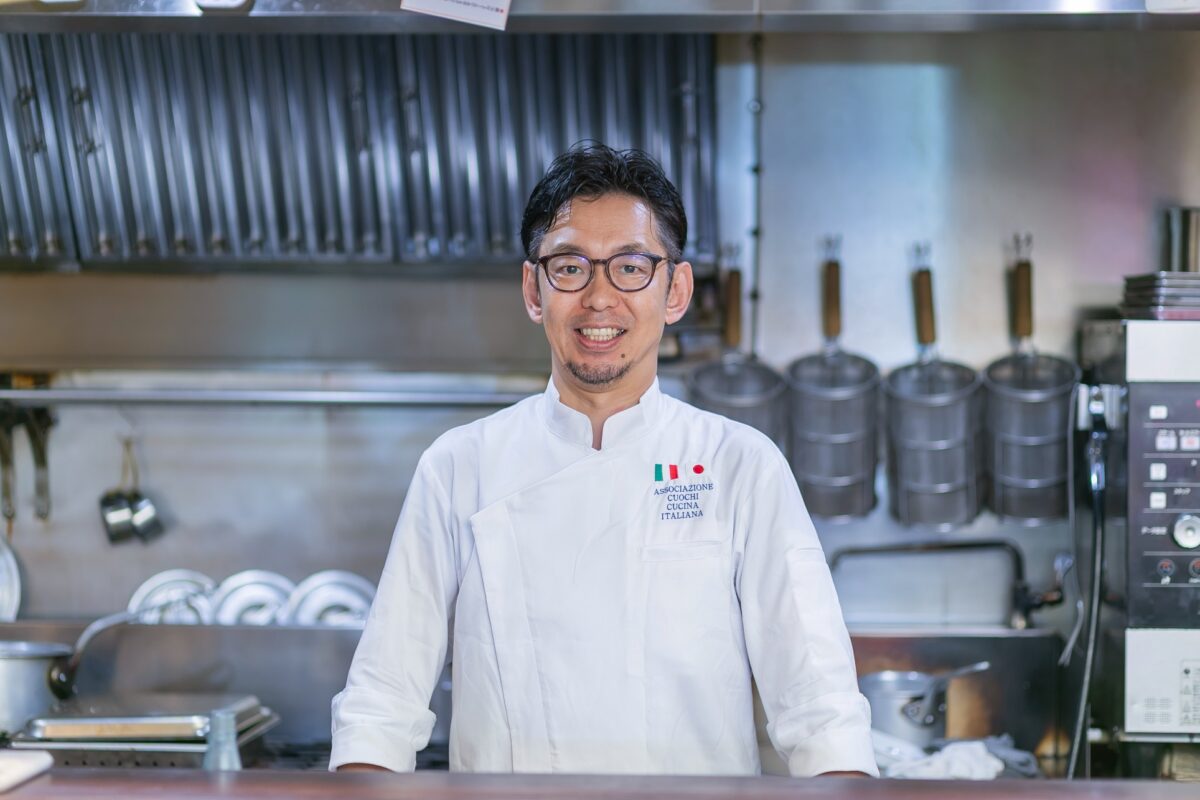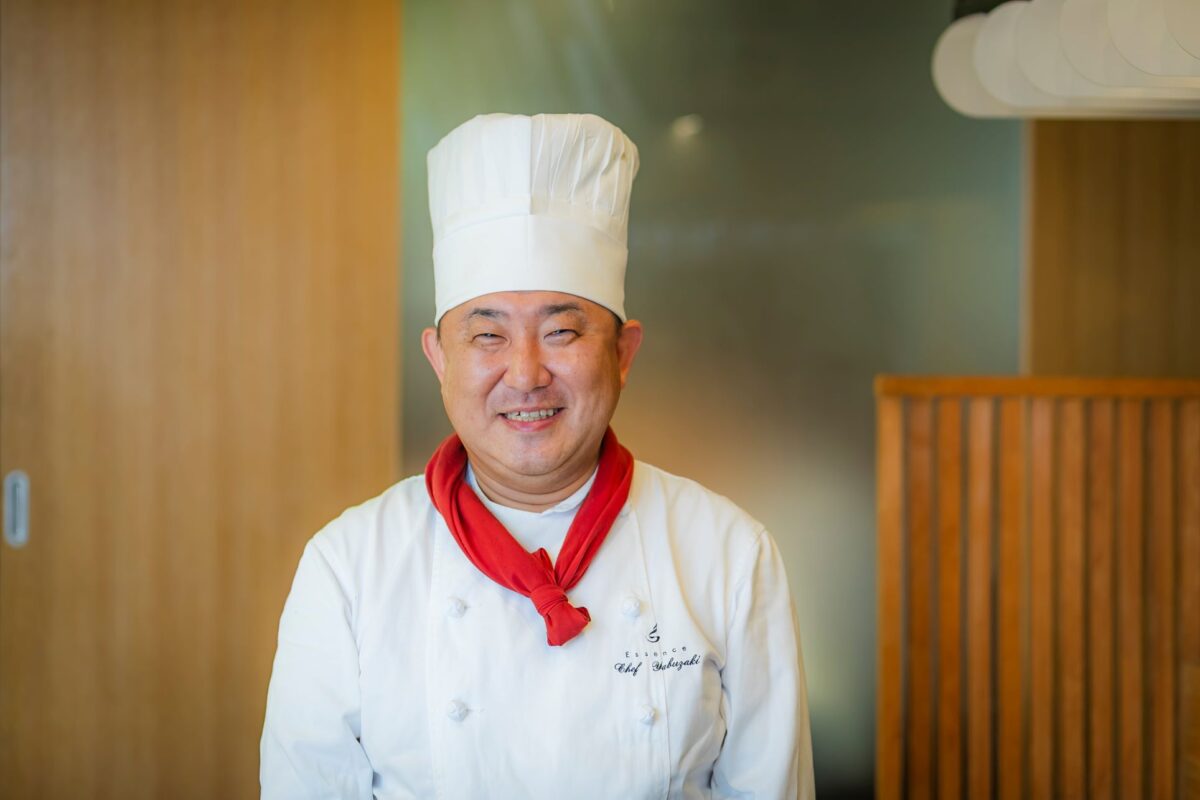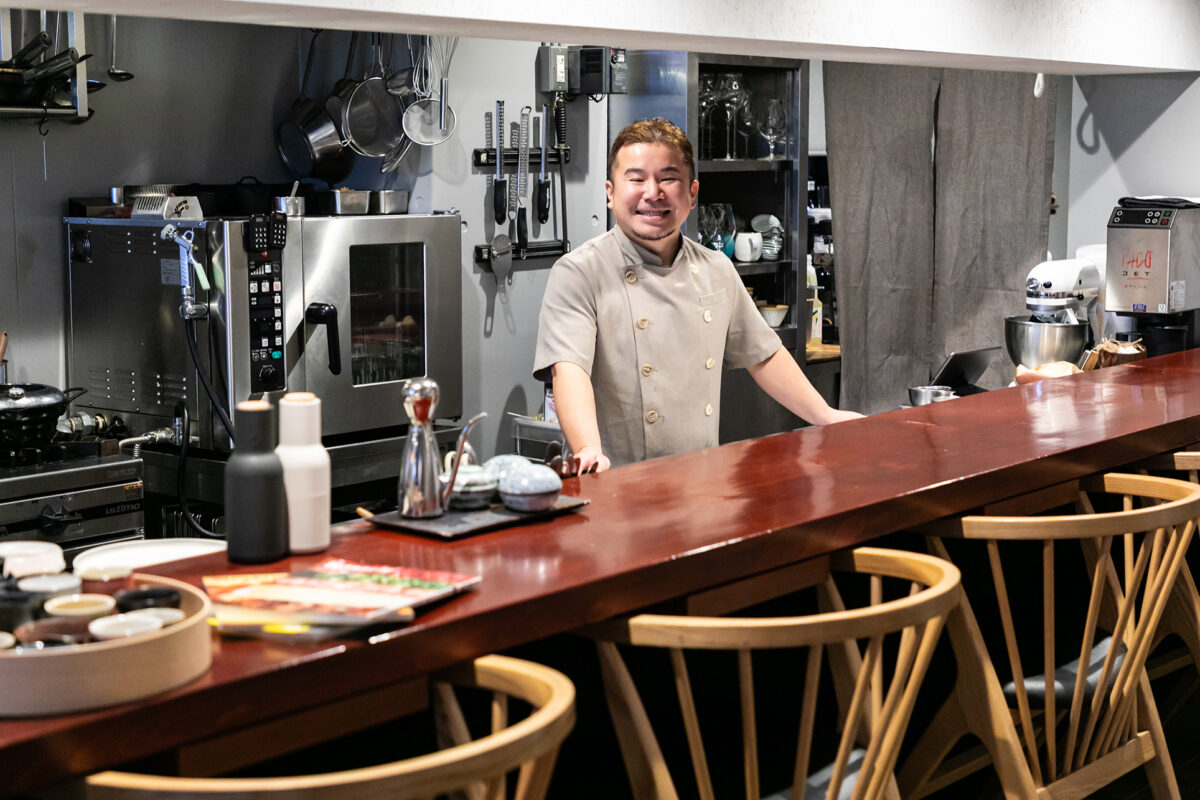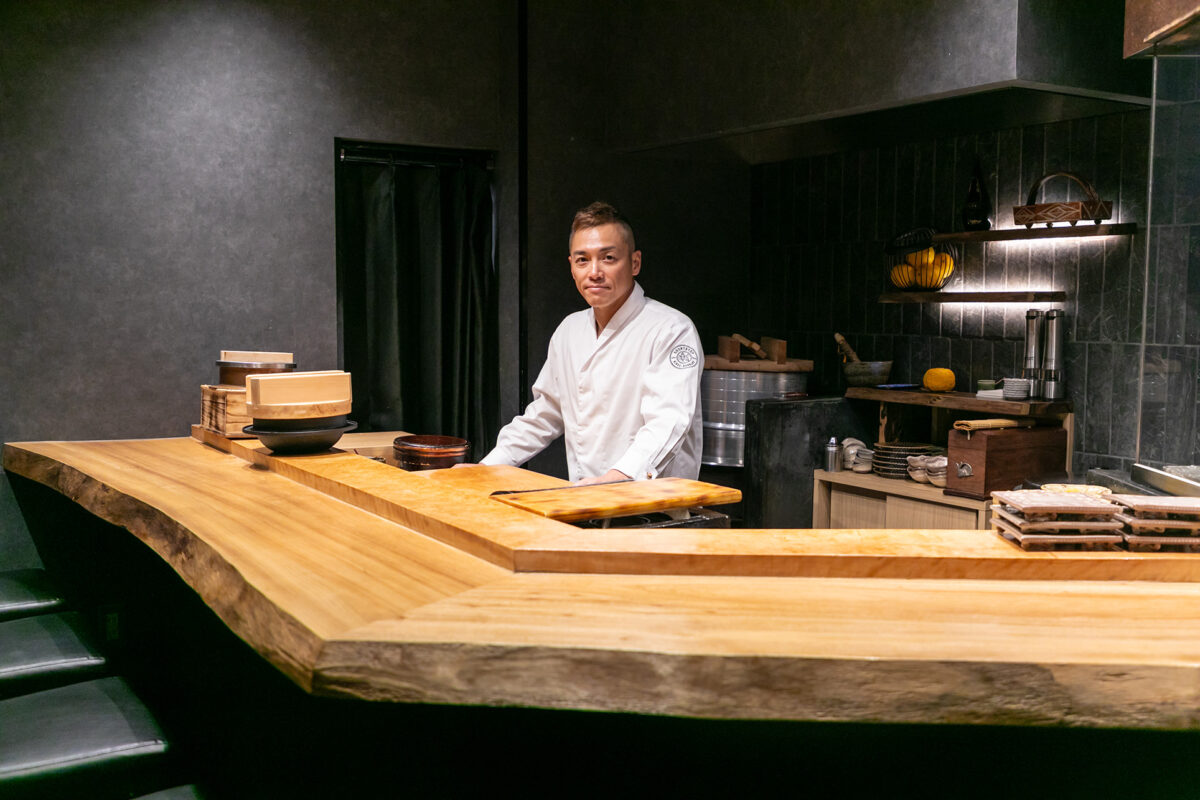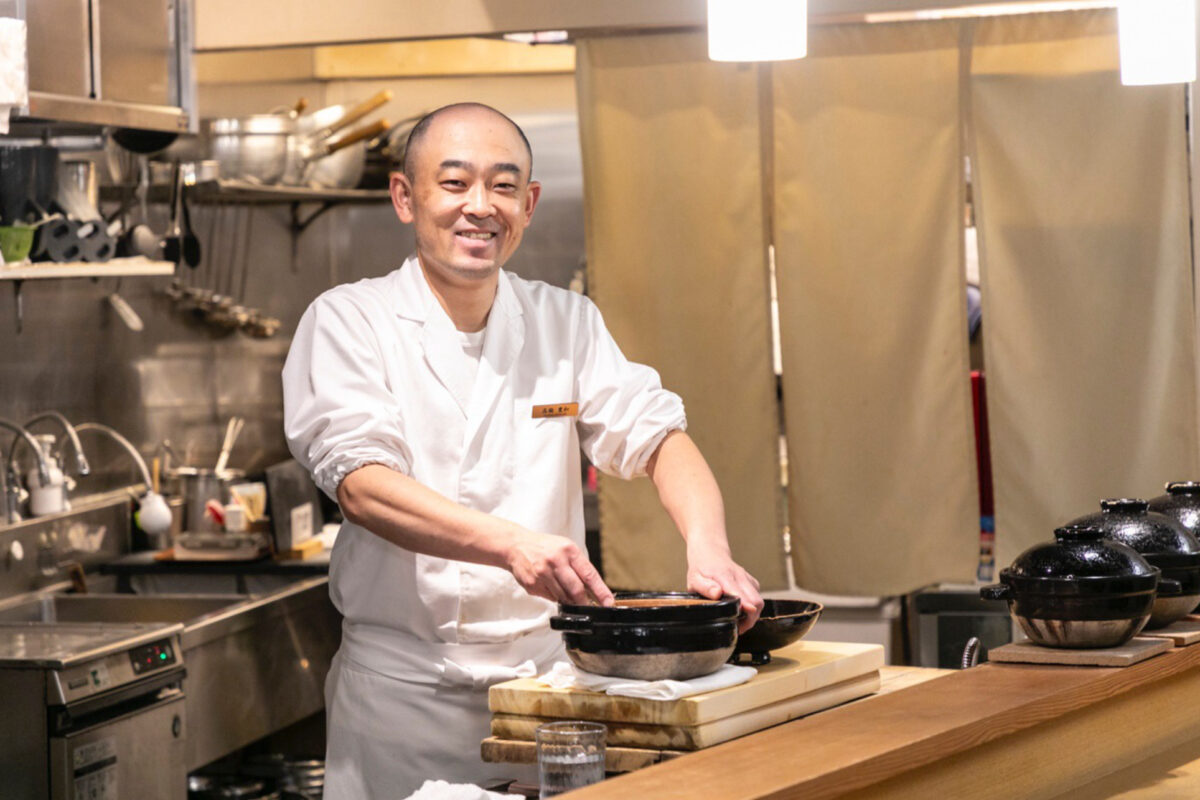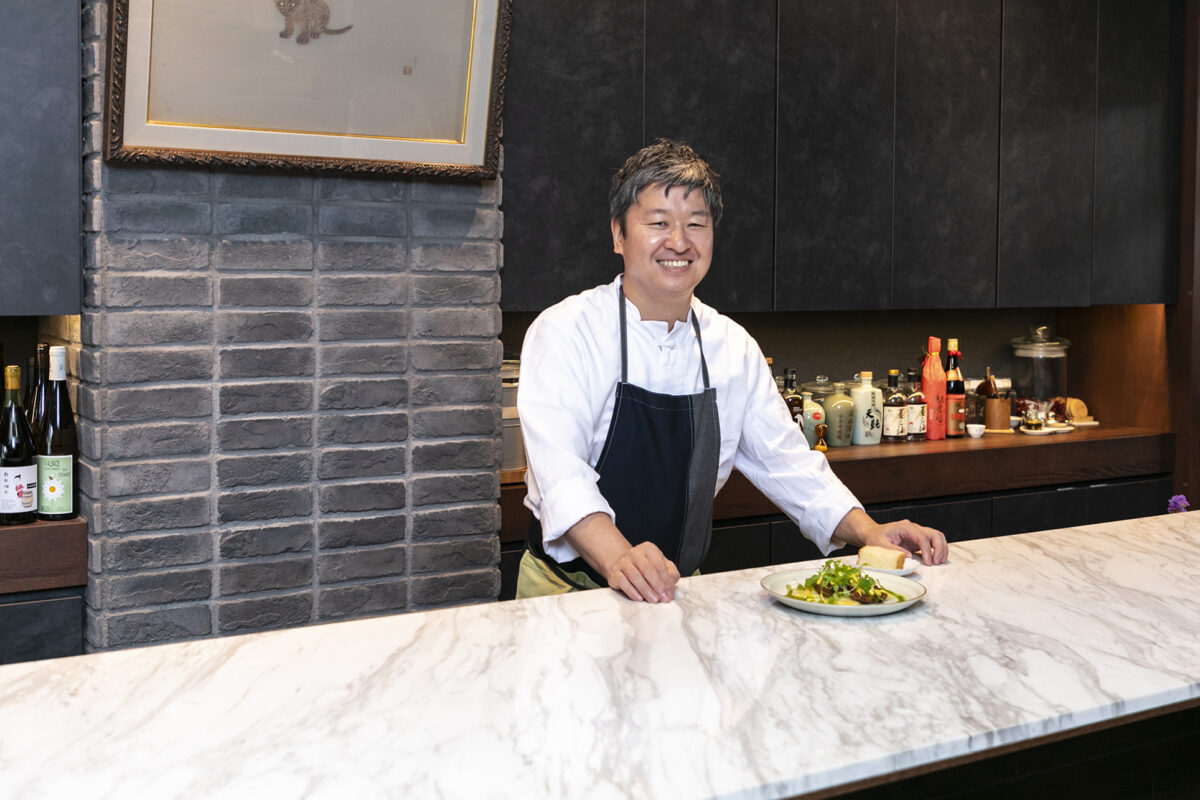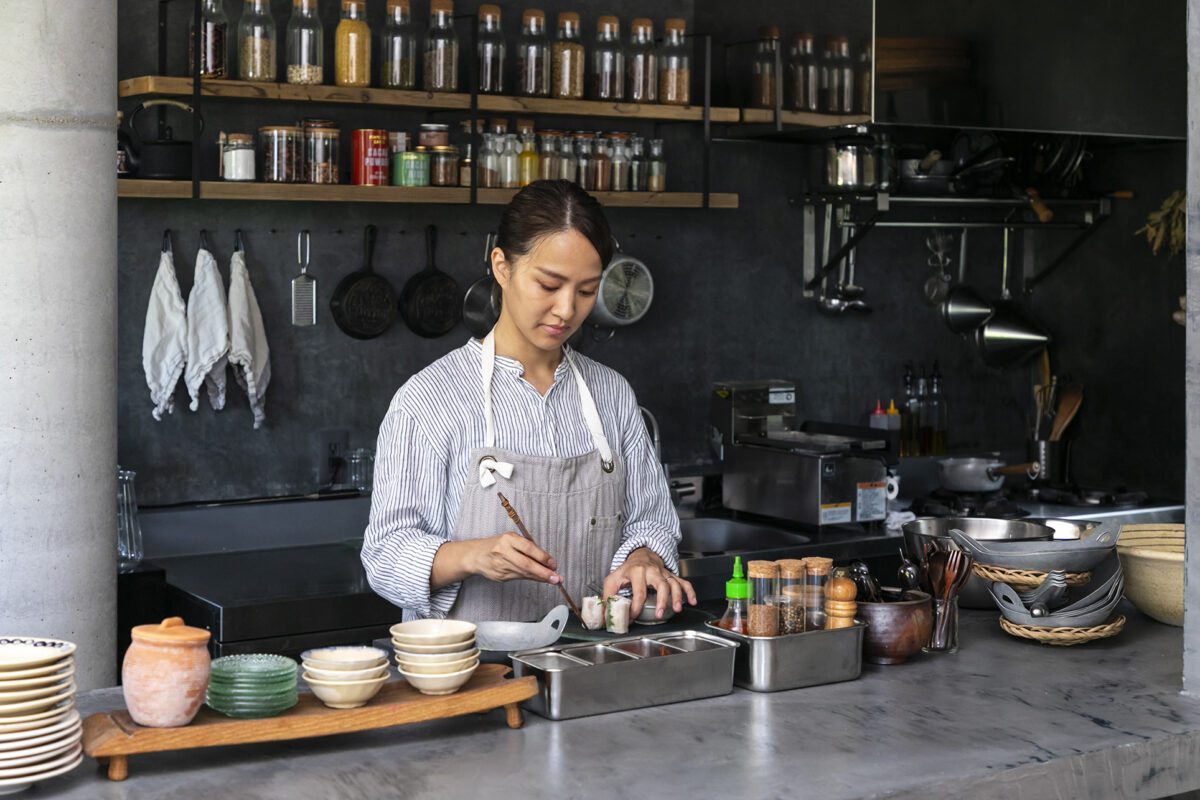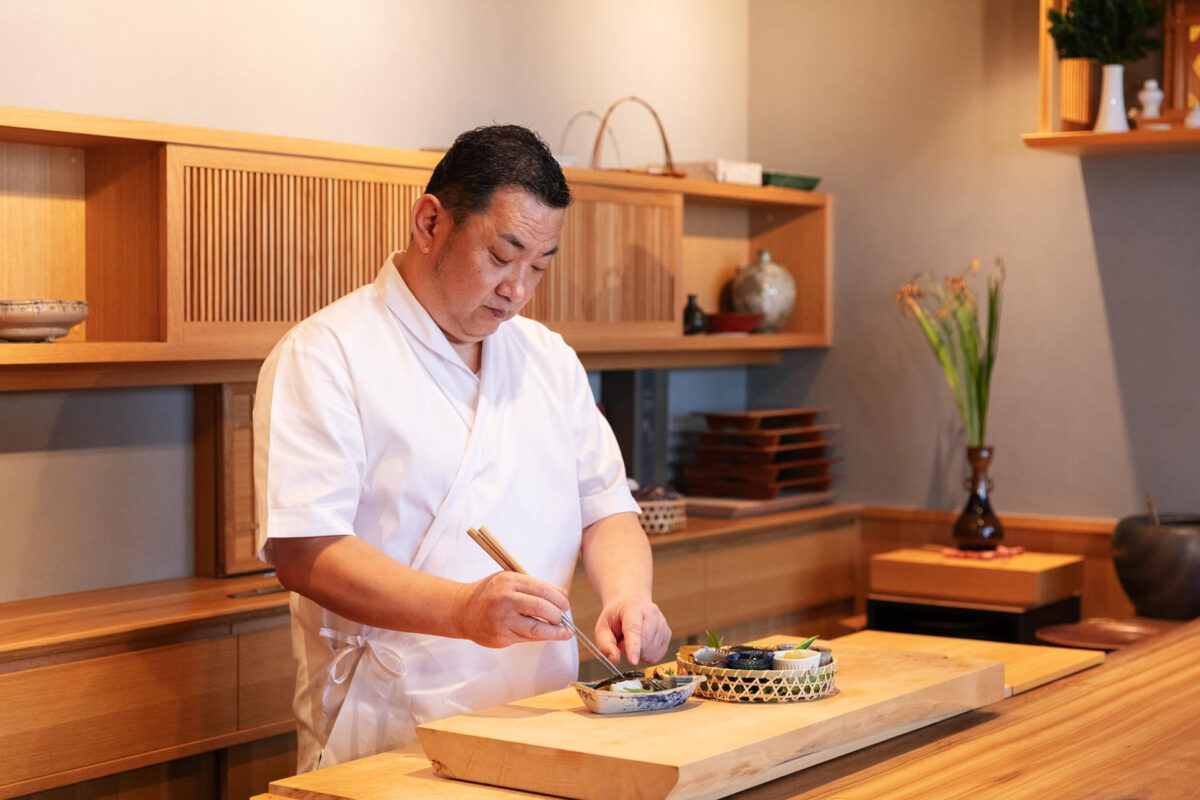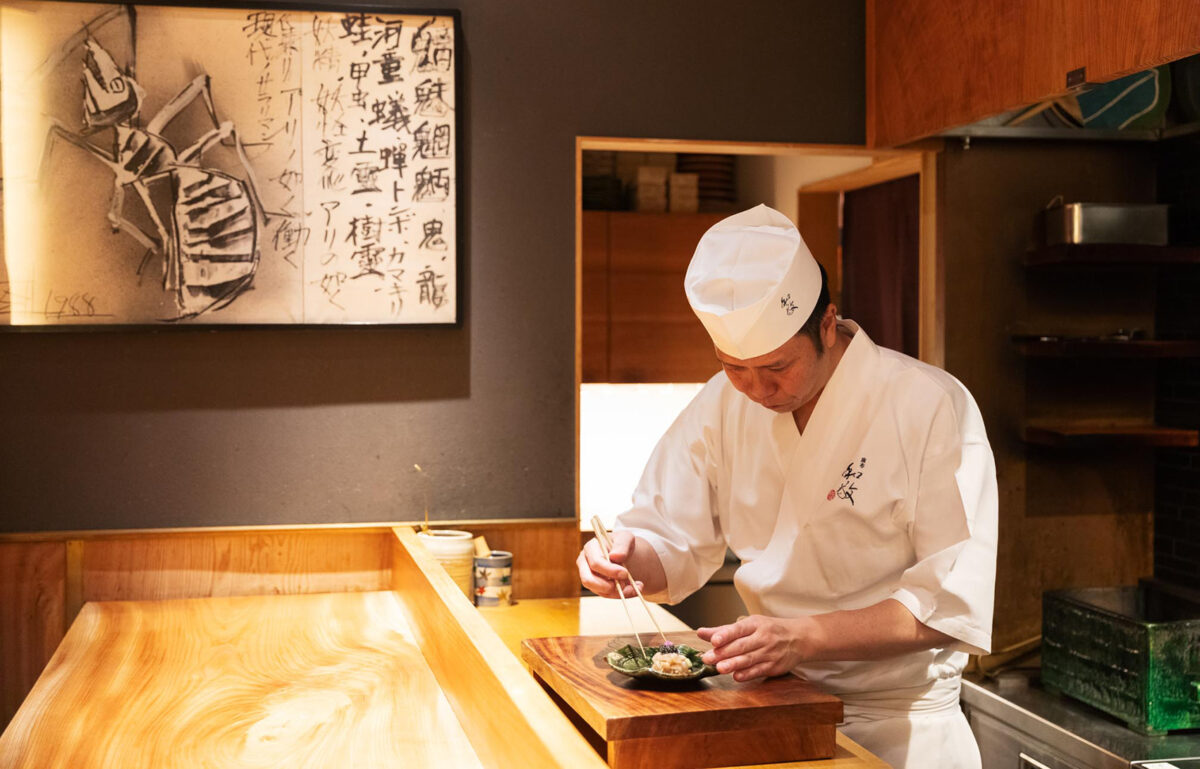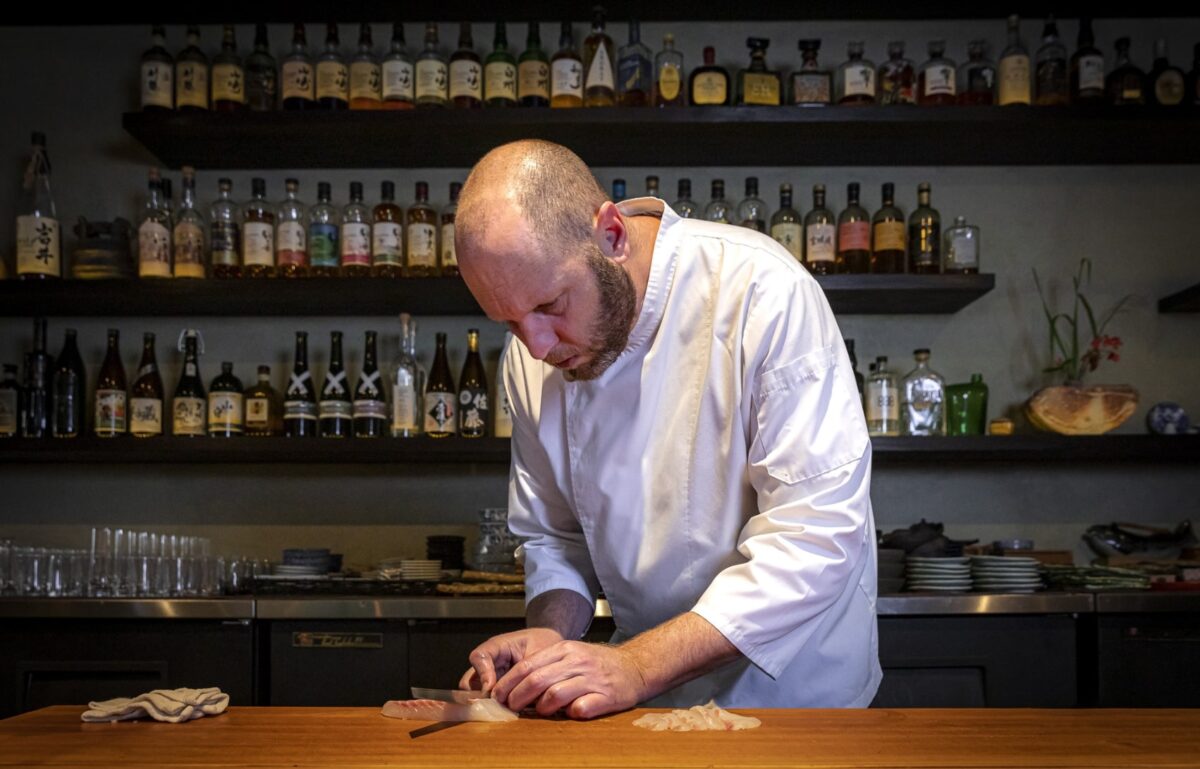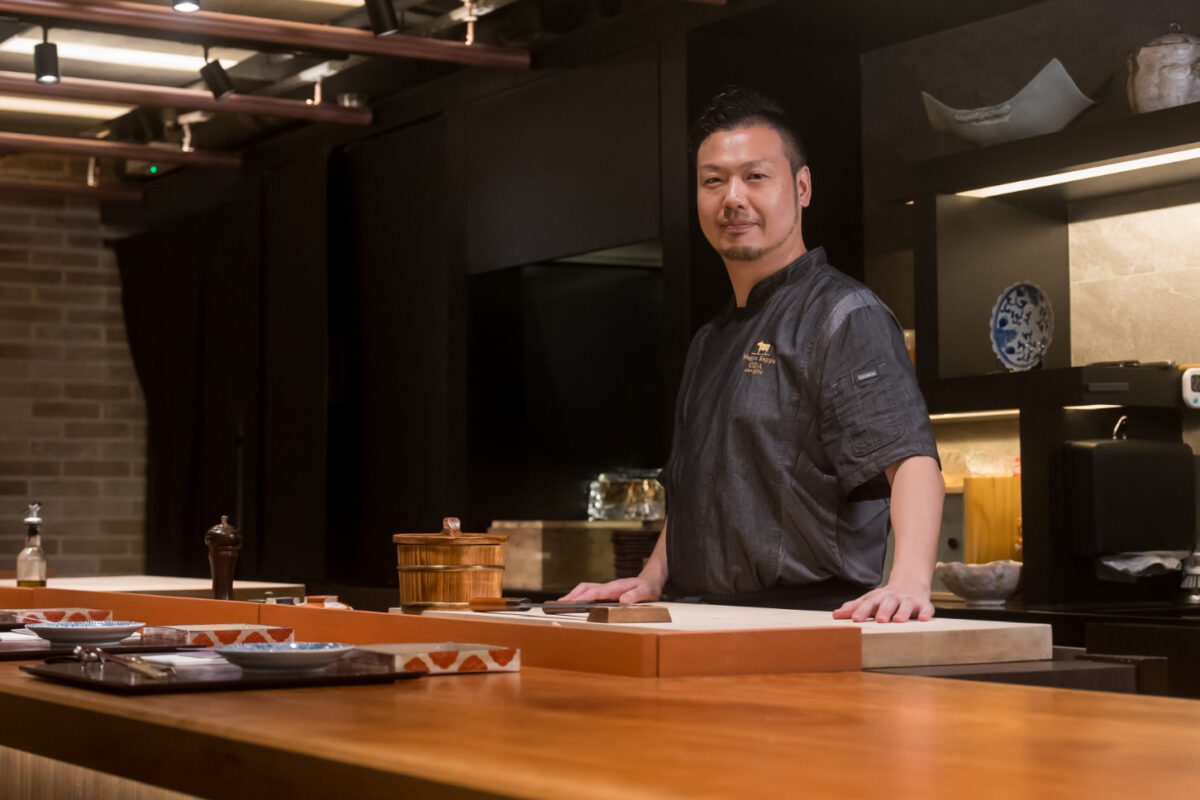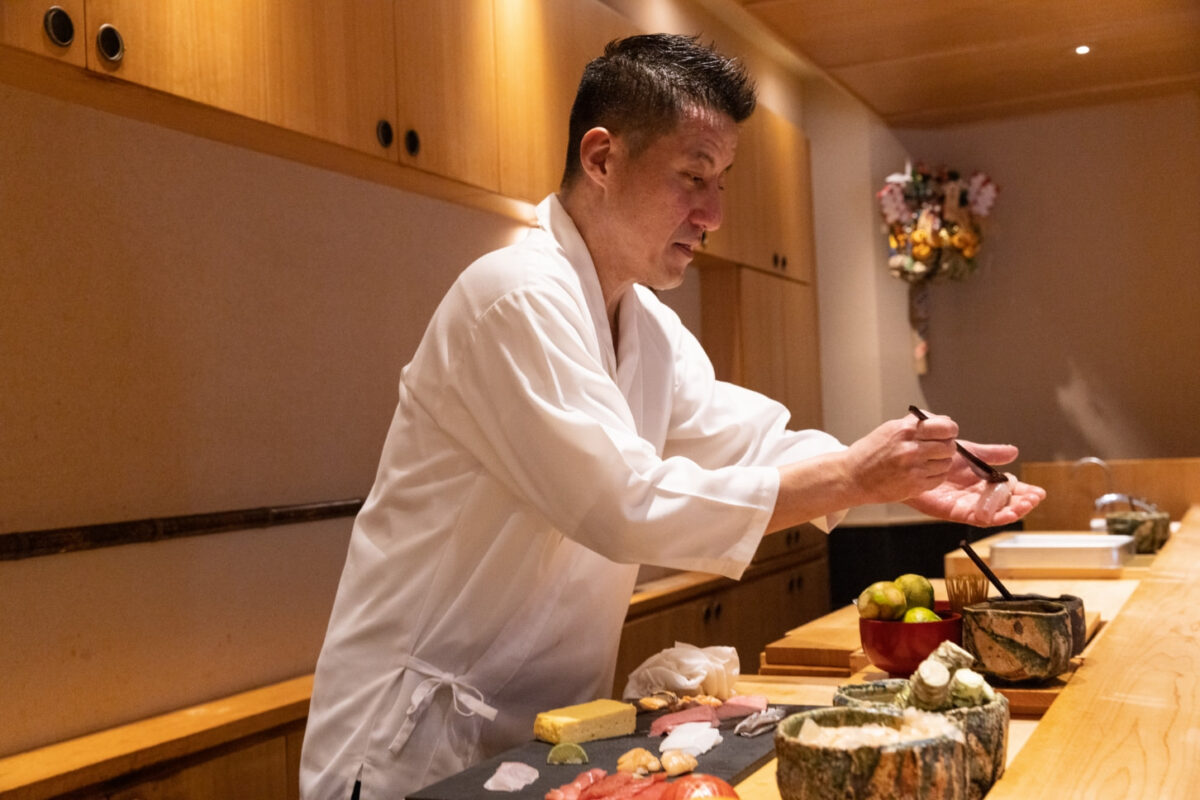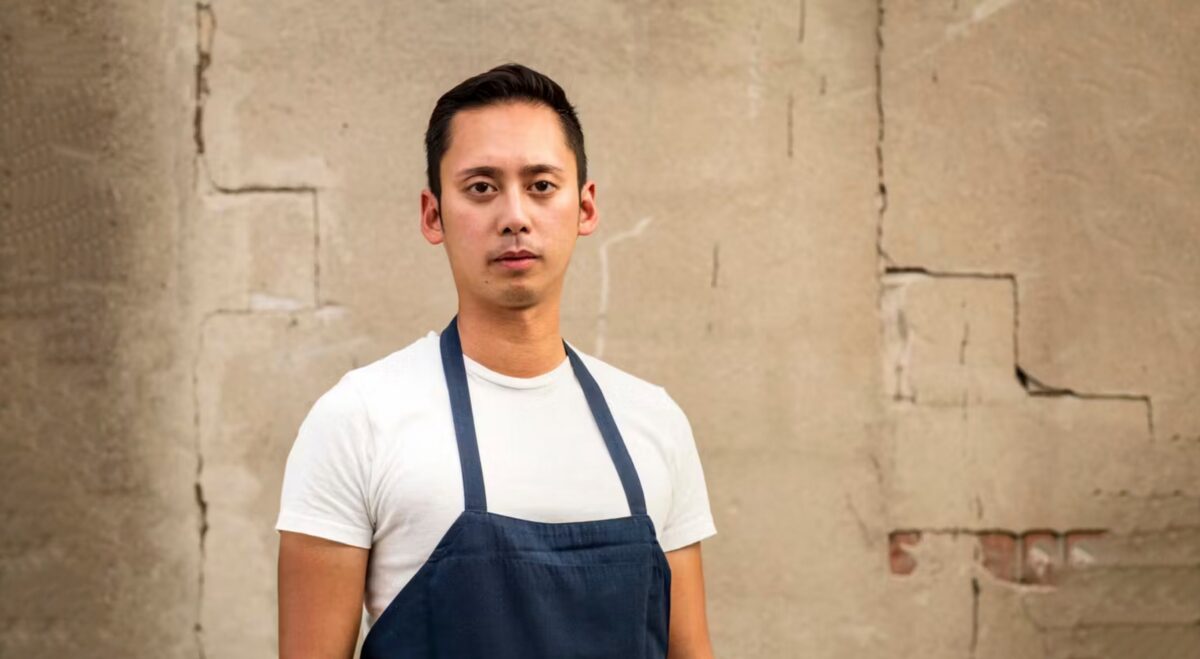NIHON RYORI KAWAHARA
A Japanese restaurant illuminating a hidden alleyway
in a traditional kominka
A kominka standing in an alley one street back from the main road. Once you pass under the noren, you will find yourself in a welcoming interior that has been created by renovating a 96-year-old house. Opened in 2017, NIHON RYORI KAWAHARA is a Japanese restaurant where the beautiful, meticulous craftsmanship of Owner-chef Koji Kawahara, who spares no effort in his daily quest for perfection, shines through. The restaurant offers a monthly omakase chef’s choice course that highlights the essence of seasonal ingredients. Kawahara carefully selects fresh seafood from Osaka’s markets, once hailed as “the kitchen of the nation,” while featuring Naniwa traditional vegetables, or heirloom varieties passed down through generations. From sashimi and steamed dishes to grilled items and seasoned rice, each dish allows diners to directly experience the power of the ingredients in a harmonious balance. Among restaurant’s highlights is its signature dish of fish and meat prepared over a rice straw-fired grill diners can view from across the counter. The mesmerizing beauty of the rising flames, combined with the exhilarating aroma of smoldering straw, creates an experience captivating all five senses.
The takikomi gohan (rice seasoned and cooked with a variety of ingredients) served at the end of the course is a simple yet edgy seasonal combination that focuses on local ingredients such as Densuke anago (conger eel) and young burdock root, both of which are specialties of the Awaji-Akashi region as well as ebi-imo taro and mukago (small, round tubercles that sprout at the stems of Japanese yam leaves) from Tondabayashi city. The final rice dish, carefully crafted to pair perfectly with the sake selected in collaboration with a neighborhood sake vendor, often leaves guests savoring each bite and wanting to drink a tad more. Kawahara’s gentle manner of serving diners and the restaurant’s comfortable atmosphere which feels like you’ve been invited into someone’s home, are the reasons why the NIHON RYORI KAWAHARA is loved by both regulars and first-timers alike.
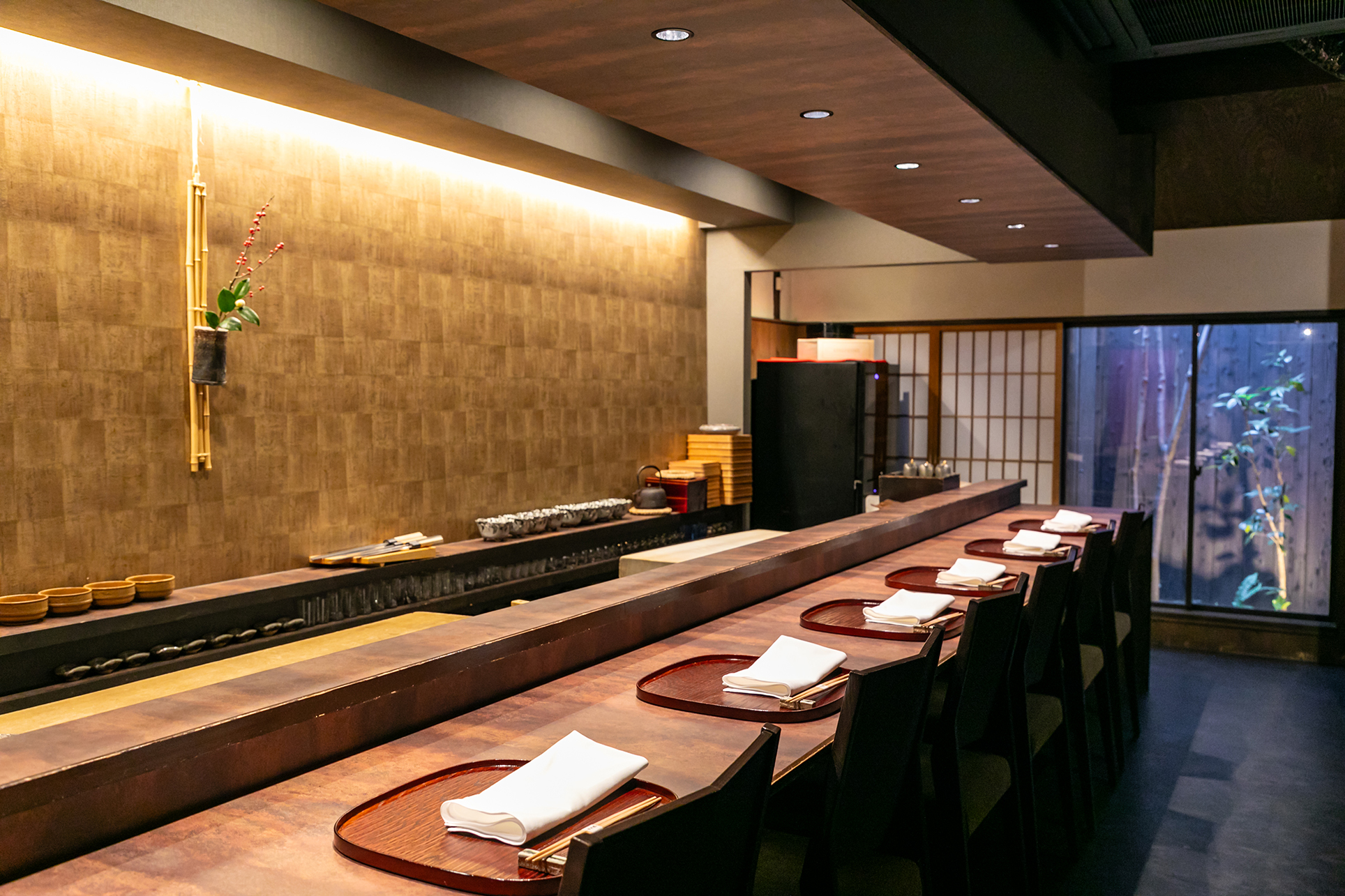

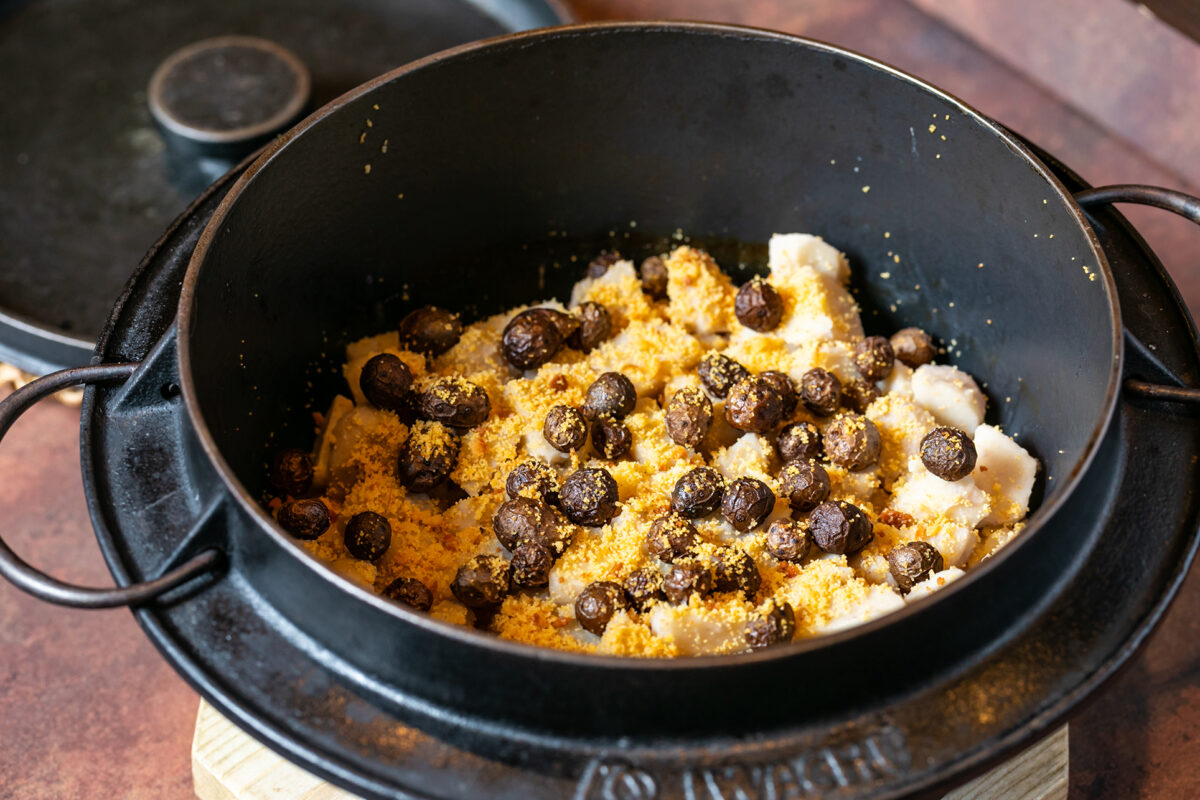
The path to becoming a chef born from the joy of working
in the hospitality industry
Actually, I didn’t think I wanted to become a chef from the beginning. However, I liked eating and communicating with people. After graduating from university, I wanted to work in the hospitality industry, so I started working in a restaurant, which was how I joined this industry. I first was hired at an izakaya that mainly served seafood. After that, I trained for eight years at Toyonaka Sakurae, which is the foundation of my pursuit of Japanese cuisine, before opening my own place. It was a short apprenticeship in Japanese cuisine, so I was still inexperienced and had a lot to learn. Yet I decided to start my own business at the age of 39, thinking that I would continue to study while running the restaurant.
I chose to offer Japanese food probably because it is a cuisine that I have eaten since I was a child and is familiar to me. The dishes at the restaurant where I trained were rather innovative and complex. But when I decided to open my own place, I thought that if my role was to convey the intentions of the producers of the ingredients through flavors, I wanted to create dishes that were more straightforward and simpler. However, while our directions may differ, I believe the way we approach Japanese cuisine and our sincere attitude toward it are what I have learned from my master over those eight years.
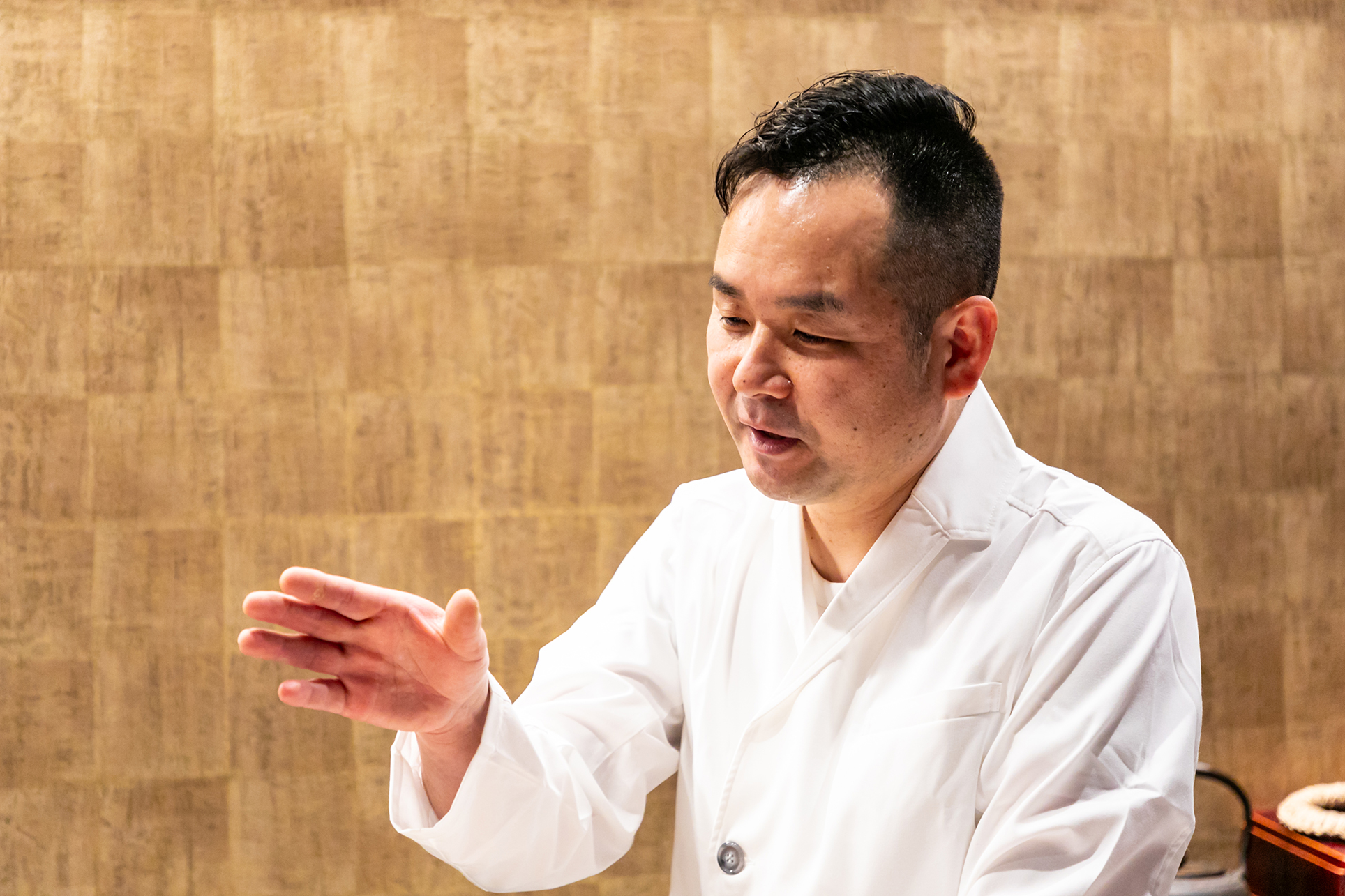
Facing the rich array of ingredients
from the “kitchen of the nation” every day
Osaka goes by nickname “the city of eating until you drop”. As it has been a center of logistics and commerce since the Edo period (1603-1868) and prospered as the “kitchen of the nation”, it is a region where various ingredients from all over the country gather. For this reason, rather using ingredients that are synonymous with Osaka, I pick fresh ingredients from the market and set the menu on a monthly basis. The idea is that, as I decide on the menu and provide it at the beginning of each month, but will make minor adjustments during the month, while observing the customers’ reactions and fine-tuning the ingredients I source. I’m updating it little by little every day to provide perfect dishes, and so that the flavor will remain one’s memory. Of course, I also want to use local ingredients as much as possible, so I proactively use Naniwa traditional vegetables, of which there are currently around 20 varieties, and fresh seafood like anago and octopus caught in Osaka Bay.
I source the sake that is paired with the dishes from Sakagura Nakayama, a sake shop that is highly trusted by chefs and local people. I invite their experts to sample the course to be offered at the restaurant every month, and I select sake for the course in consultation with them. On occasion, I invite the sake brewers, who may have few opportunities to experience how the sake they produce complements cuisine, to enjoy a meal at my restaurant. I value communicating with producers and everyone involved with the ingredients as much as possible.
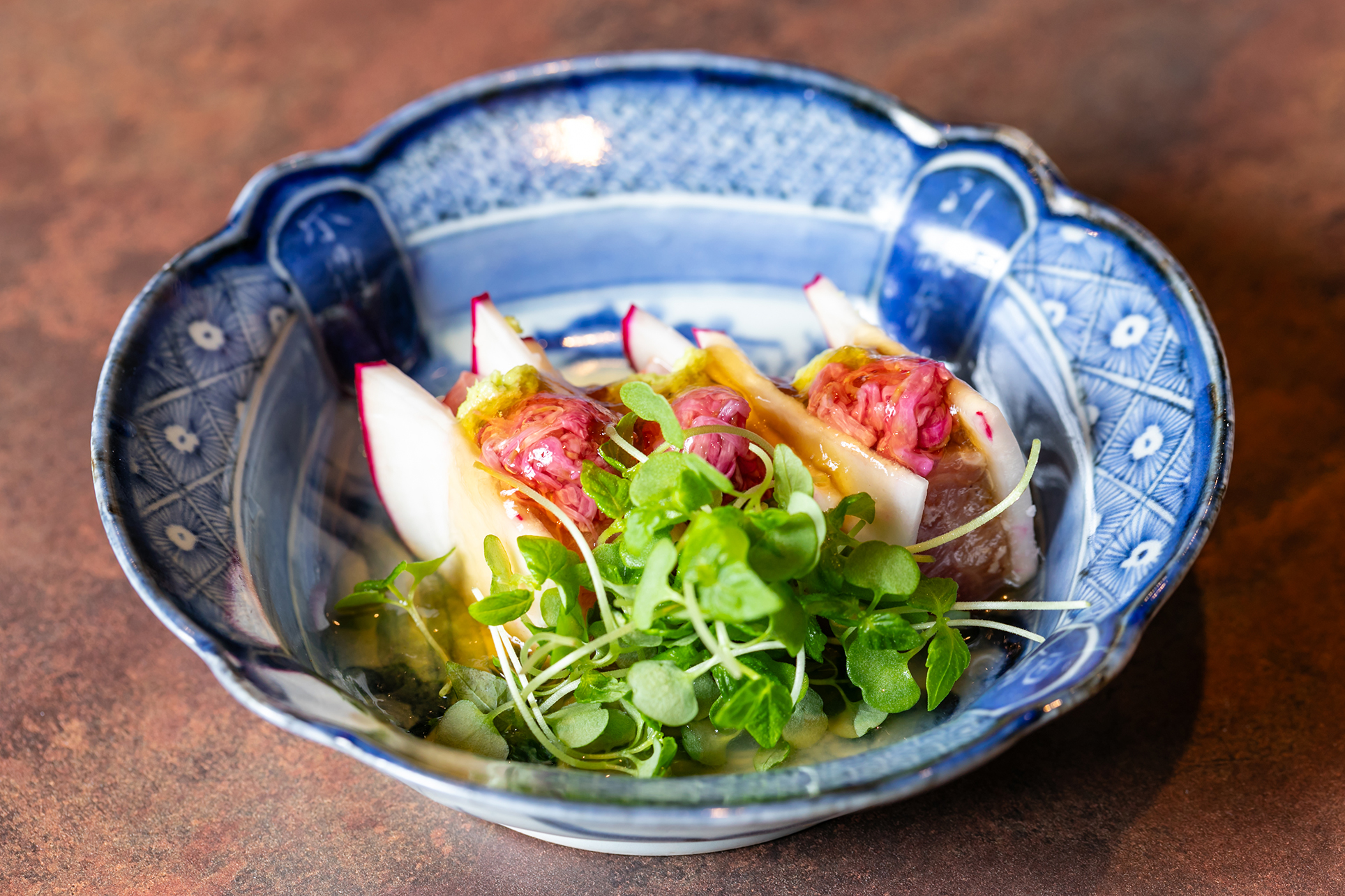
The potential of Japanese rice felt through food
that makes good use of every ingredient
The rice I have used since the restaurant opened is Koshihikari from Minamiuonuma in Niigata Prefecture. The Koshihikari grown by Masahiro Abe in the highly regarded Shiozawa district of Minamiuonuma City is rich in aroma and sweetness, has a glossy appearance, and has a high stickiness, so it’s delicious even when it has cooled down. Normally, we serve it as takikomi gohan, but during the harvest season for new rice, we serve it as white rice so that guests can enjoy the depth of flavor and full-bodied strength of this rice. As part of my commitment to rice, I purchase genmai* (brown rice) in bulk quantities of several dozen kilograms. Each day before service starts, I mill only the amount needed for that day using our in-house rice milling machine. Milled rice is exposed to the outside air, which can inevitably cause the surface fats to oxidize during storage, leading to a deterioration in flavor as well as the loss of moisture and sweetness. By milling the rice as it is needed, guests can savor it in its freshest state, with a delightful chewy texture.
After milling the rice, we do not throw out the removed nuka rice bran (the powdery husk, seed coat, and germ); instead, we repurpose it to make a pickling bed for pickles*. In the Kansai region, centered on Osaka, there is a concept called “Shimatsu no Ryori”, which symbolizes the food culture of the region. It embodies the spirit of taking good care of things, not wasting things, and saving and economizing to enjoy things to the last. Examples of this are making soup stock from fish bones after you have filleted fish or creating dishes from vegetable leaves and skins by stir-frying them. Nowadays, this way of thinking has spread beyond the Kansai region to Japanese cuisine as a whole. The nuka of Japanese rice has a sweetness similar to that of kinako (soybean powder) even when used on its own. By pickling it with vegetables, the flavor permeates and it becomes a soft, rounded flavor that is not too salty. I am grateful for the potential of Japanese rice, which can be used up deliciously without wasting any of the body or the hull.
*The state in which only the outer husk (chaff) has been removed from the harvested rice. White rice has been milled to remove the bran and germ.
*A pickling bed (the base for pickles that looks like miso) made by adding water, salt, and other ingredients to rice bran and mixing them together to produce lactic acid fermentation. Pickles that are made by placing vegetables in this mixture are called “nukazuke”.
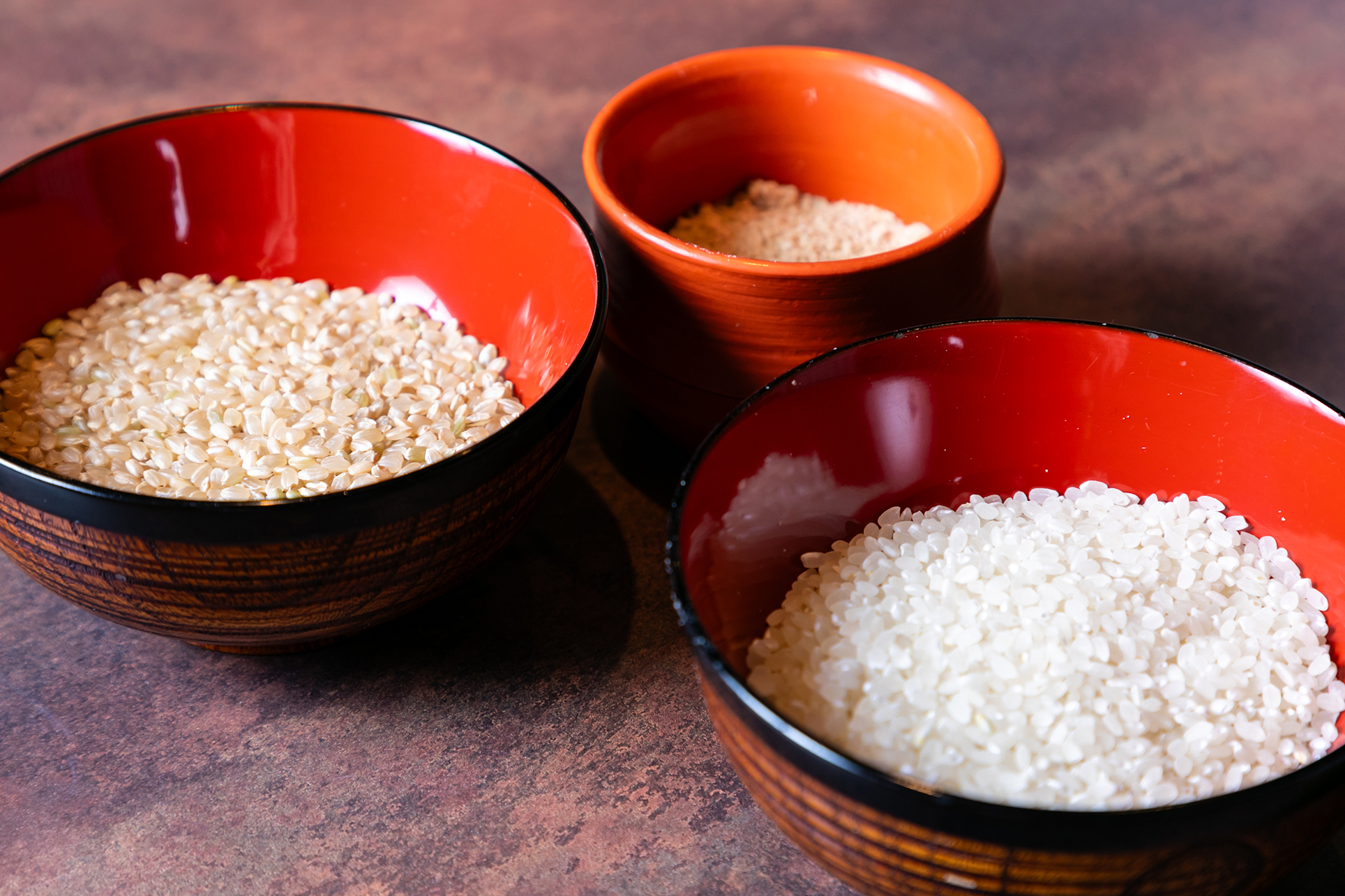
Japanese rice is the star ingredient
I think Japanese rice is a rare ingredient that is a complete dish on its own. Even without adding seasonings, it is a complete dish made with just rice and water. It’s amazing to me that everyone agrees that rice is at its best when it’s not seasoned. At the restaurant, I serve rice dishes with as little seasoning as possible to bring out the natural flavor of the Japanese rice. The recipe I am introducing this time, “Asari (short-necked clams) and Tomato Okayu”, or rice porridge with short-necked clams and tomatoes, is also made without using dashi when served in my restaurant. Instead it is prepared almost entirely from the natural saltiness of the clams and the umami of the tomatoes.
Also, rice is usually a “bridge ingredient” that is often served in the middle of a course in French or Italian cuisine, but in Japanese cuisine, it is the “last course, or the finale”. It is also highly nutritious and functions as an excellent and well-balanced ingredient. It can be said that Japanese rice is the star ingredient for Japanese people.
Expectations for new encounters
between Japanese rice and overseas ingredients
Rice is a familiar food for Japanese people, but I am certain there are many aspects of handling rice that are unfamiliar to people outside Japan. However, when you actually try it, you’ll find that it’s very easy to make. In Japan, when you say, “cooking rice in a pot”, one imagines an earthenware pot, but at my restaurant, we use a cast iron pot made of Nambu ironware. In an iron pot, the umami ingredients are sealed in because the water and heat are distributed evenly throughout the rice. Additionally, these pots are characterized by a high sealing rate and the ability to reach a boil quickly. The rice is cooked plump without loss of moisture by moving to the steaming stage at an early juncture. I imagine a similar effect will happen when using the thick pots that are common overseas. All you need to start is rice and water. You may be able to create a new flavor experience if you mix or add into the rice ingredients that are unique to a particular country’s culture and that are not available in Japan. The possibilities are limitless. I guess you’ll probably make some mistakes at first, but I hope you’ll keep trying and enjoy the savoring of the rice you make.
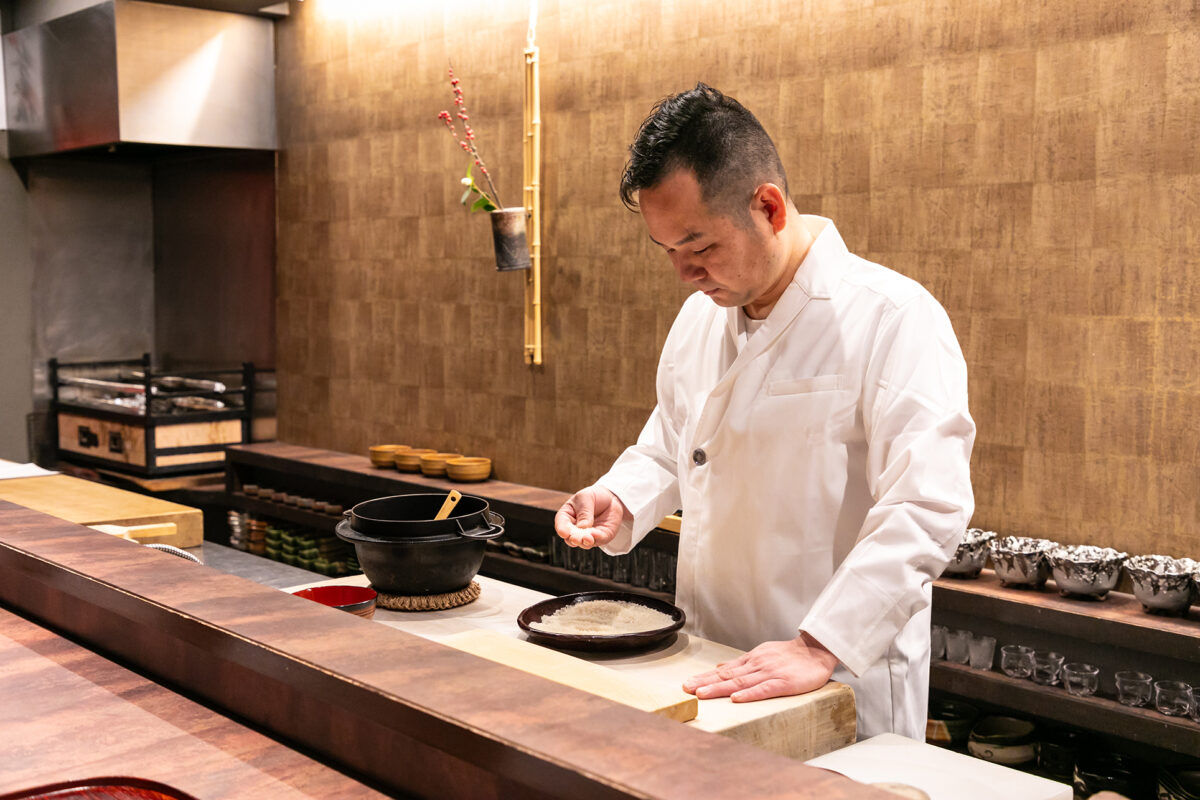
Recommended dish
Katsuo (bonito) seared with rice straw (one of the dishes in the multi-course menu) カツオの藁焼き(コースの一品として提供)
With preparation visible from the counter, this is a sashimi dish served by skewering katsuo and dramatically searing it over an open flame made from rice straw. The contrast between the crispy, seared skin and the fatty flesh is masterful. The katsuo is served with a yolk vinegar with a gentle acidity, along with a ponzu gelée made from lacto-fermented onions from Awaji Island in Hyogo Prefecture, and finished with melt-in-your-mouth awayuki light salt flakes. This is a specialty of the first half of the course, which is sometimes made with maguro (tuna), sawara (Japanese Spanish mackerel), or other fish depending on the season that deliver umami from its fat.

